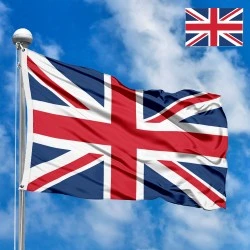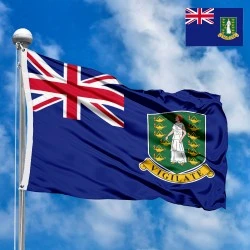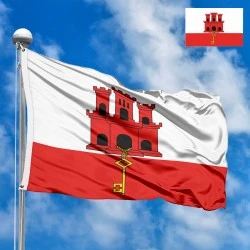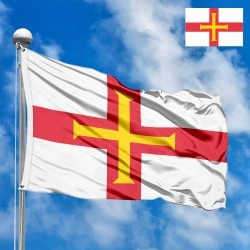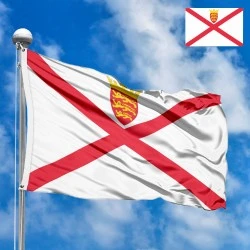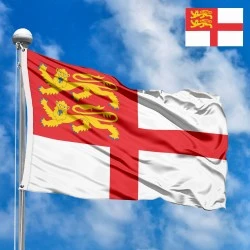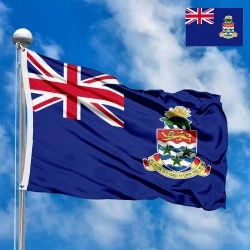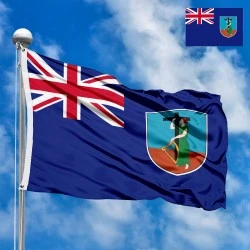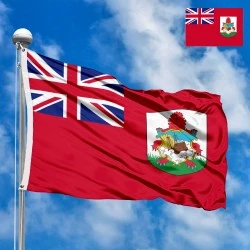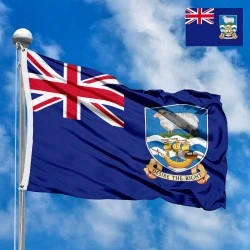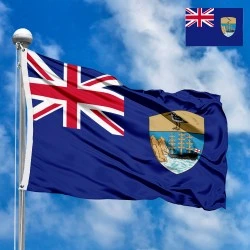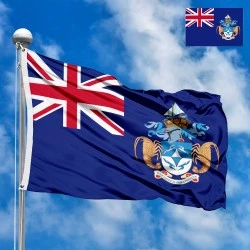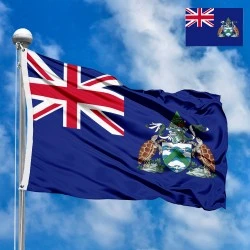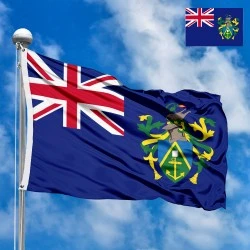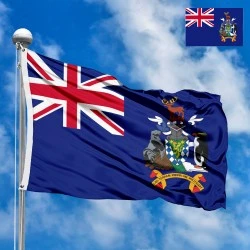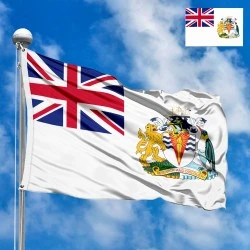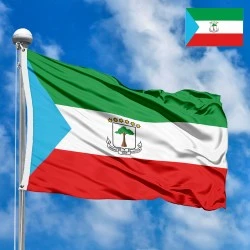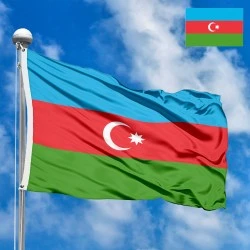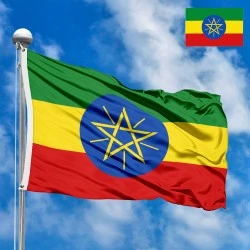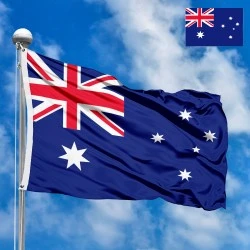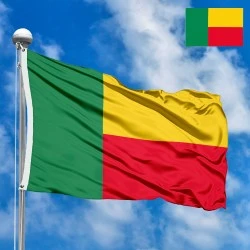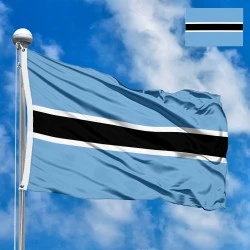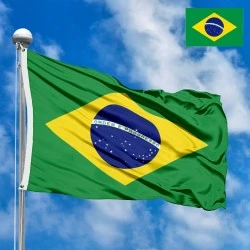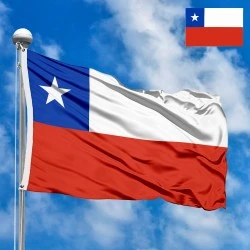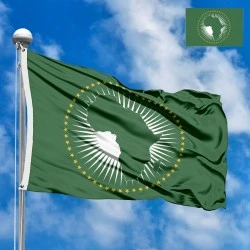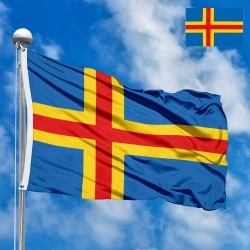Flag of Anguilla
- Flag Type: Regional
- Proportions (official): 1:2
- Official name: Anguilla
- Local name: Anguilla
- Sovereignty (year): NO (British Overseas Territory)
- Country code, territory: AI, AIA, 660
- Capital: The Valley
- Large cities: The Valley, Blowing Point, Sandy Ground
- Population: ~16,000 (2024, estimate)
- Religions: Christianity ~89%
- Area (km²): 91
- Highest point: Crocus Hill (65 m)
- Lowest point: Caribbean Sea (0 m)
- Currency: Eastern Caribbean dollar (XCD, $)
- Languages: English
- Dialing code: +1-264
- National domain: .ai
Flag Information
General information
Demography and Culture
Economy and communications
- All Flags
- Flags of Countries by Continent
-
Flags of Organizations
- Flags of UN countries
- Flags of the European Union countries
- Flags of NATO countries
- Flags of the countries of the Organization of Islamic Cooperation
- Flags of the countries of the Organization of American States
- Flags of the Arab League countries
- Flags of the African Union countries
- Flags of the countries of the Union of South American Nations
- Flags of the Commonwealth of Nations
- Flags of the countries of the Secretariat of the Pacific Community
- Flags of the Nordic Council countries
- Flags of the Caribbean Community
- Flags of the countries of the Association of Southeast Asian Nations
- Flags of the East African Community
- Flags of the countries of the Organization of Turkic States
- LGBT Community Flags
- Historical Flags
- Ethnic Flags
- Flags of the USA (states)
Description
The flag of Anguilla is a distinctive and powerful symbol that represents the island nation's struggle for self-determination, its unwavering spirit, and its unique identity. Far from being a mere colonial banner, this flag tells a story of a people who fought to define their own destiny. Adopted on May 30, 1990, it is a testament to Anguilla's resilience and its deep connection to the sea and its inhabitants. The flag's design is simple yet profound, with each element holding significant meaning for the people of this Caribbean paradise.
Design and Symbolism: A Tale of Unity and Purity
The flag of Anguilla is a Blue Ensign with a unique and striking coat of arms. It features a blue field with the Union Jack in the canton (the upper hoist corner) and a shield-like coat of arms of Anguilla in the fly (the right side). This design places it within the family of British Overseas Territories flags, but its central emblem sets it apart.
-
The Blue Ensign: The blue field and the presence of the Union Jack in the canton are symbolic of Anguilla's status as a British Overseas Territory. The Union Jack signifies the island’s enduring constitutional relationship with the United Kingdom, providing stability and a link to the broader Commonwealth. The blue of the ensign is also said to represent the Caribbean Sea that surrounds the island, a source of life, trade, and culture.
-
The Coat of Arms: The central element of the flag is the coat of arms, a design of a white shield with a light blue base and three golden dolphins. This emblem is a direct and powerful representation of Anguillan identity.
-
The White Shield: The white background of the shield represents peace and tranquility. It is a symbol of the peaceful nature of the Anguillan people and the serene beauty of their island home, known for its pristine white-sand beaches.
-
The Blue Base: The light blue base at the bottom of the shield is a nod to the surrounding Caribbean Sea. It also represents faith, youth, and hope for the future. The sea is the lifeblood of Anguilla, vital for its economy through fishing and tourism.
-
The Three Dolphins: The most iconic and symbolic part of the flag is the depiction of three golden dolphins arranged in a circle, leaping out of the sea.
-
Strength and Endurance: The dolphins represent strength, endurance, and unity. They are a metaphor for the Anguillan people, who have shown incredible strength and resilience in their fight for their identity.
-
Unity and Progress: The circular arrangement of the dolphins signifies unity, harmony, and progress. It reflects the idea that the people of Anguilla are a cohesive and forward-thinking community.
-
The Three Islands: The three dolphins can also be seen as representing the three major islands of Anguilla's territory: Anguilla, Dog Island, and Sombrero Island.
-
-
History and Creation: The Flag of Revolution
The history of Anguilla's flag is deeply tied to its political history, particularly its separation from Saint Kitts and Nevis. From 1967 to 1969, Anguilla sought to detach itself from the associated state of Saint Kitts-Nevis-Anguilla. This period saw the Anguillan Revolution, where the island's people asserted their desire for independence.
The first unofficial "flag of revolution" was a red banner with two mermaids and a seashell. This was quickly replaced by the famous dolphin flag, a plain white field with a blue base and the three orange dolphins. This flag, designed by a committee of locals, became a powerful and enduring symbol of the Anguillan people's desire for freedom and self-governance. It was this flag, with its simple but profound message, that flew during the short-lived Republic of Anguilla.
When Anguilla officially became a British dependency in 1980, the original dolphin flag was not immediately adopted as the official one. It wasn't until a decade later, on May 30, 1990, that the current design—a British Blue Ensign with the beloved dolphin emblem—was officially adopted, combining the island’s proud, revolutionary symbol with its constitutional status.
Size and Proportions
The flag of Anguilla adheres to the standard British flag proportions, with a width-to-length ratio of 1:2. This ratio ensures a consistent look with other flags of the British Commonwealth and maintains the proper visual balance between the Union Jack and the coat of arms.
Interesting Facts and Significance
The flag of Anguilla is more than just a piece of cloth; it is a historical document.
-
The Original Dolphin Flag: The unofficial dolphin flag of the Anguillan Revolution (a plain white field with blue and orange dolphins) is still a very important symbol for the islanders. Many Anguillans still view this flag as the true symbol of their national spirit and it is often seen flying alongside the official flag.
-
A Symbol of Hope: The blue, white, and golden colors of the flag are often interpreted as representing the hopes and aspirations of the Anguillan people. The white for peace and purity, the blue for the surrounding sea and hope, and the gold for the enduring spirit and resilience of the people.
-
International Recognition: The adoption of the official flag in 1990 marked a significant step in Anguilla's journey toward greater international recognition and a more defined national identity.
Significance for the People
For the people of Anguilla, the flag is a beacon of their history and their future. It represents the courage of those who fought for the island's autonomy, the beauty of their natural home, and the strength of their community. The three dolphins, leaping together, are a powerful reminder of unity and the shared determination to build a prosperous and peaceful future. The flag is a source of immense pride, uniting the people under a symbol of their hard-won freedom and their unique place in the Caribbean.
In the demonstration images, full-size flags are shown with proportions of 2:3, and hand-held flags with proportions of 1:2.
Donation
Download
Completely free for commercial and non-commercial use (public domain).
You can freely use them in your news magazines, websites, software, mobile applications.
We appreciate a backlink to https://flagssite.com
Raster files - Flag of Anguilla (PNG, JPG)
 Waving flag
Waving flag
- PNG format (transparent background), 72dpi, dimensions in Pixels (px), aspect ratio 3:4.
- 15х20 px
- 30х40 px
- 60х80 px
- 120x160 px
- 240x320 px
 Sizes:
Sizes:
"v15" - image size (by height); if necessary, replace with available: v15, v30, v60, v120, v240.
!!! For resizing, use the Latin (eng) keyboard layout.
<img src="https://flagssite.com/flags/v15/20531.png" alt="Flag of Anguilla">
 Round flag
Round flag
- PNG format (transparent background), 72dpi, dimensions in Pixels (px), aspect ratio 1:1.
"d15" - image size (diameter); if necessary, replace with available: d15, d30, d60, d120, d240.
!!! For resizing, use the Latin (eng) keyboard layout.
<img src="https://flagssite.com/flags/d15/20531.png" alt="Flag of Anguilla">
 Rectangular flag 2:3
Rectangular flag 2:3
- JPG format, 72dpi, dimensions in Pixels (px), aspect ratio 2:3.
"h30" - image size (by height); if necessary, replace with available: h15, h30, h60, h120, h240, h360, h480.
!!! For resizing, use the Latin (eng) keyboard layout.
<img src="https://flagssite.com/flags/h30/20531.jpg" alt="Flag of Anguilla">

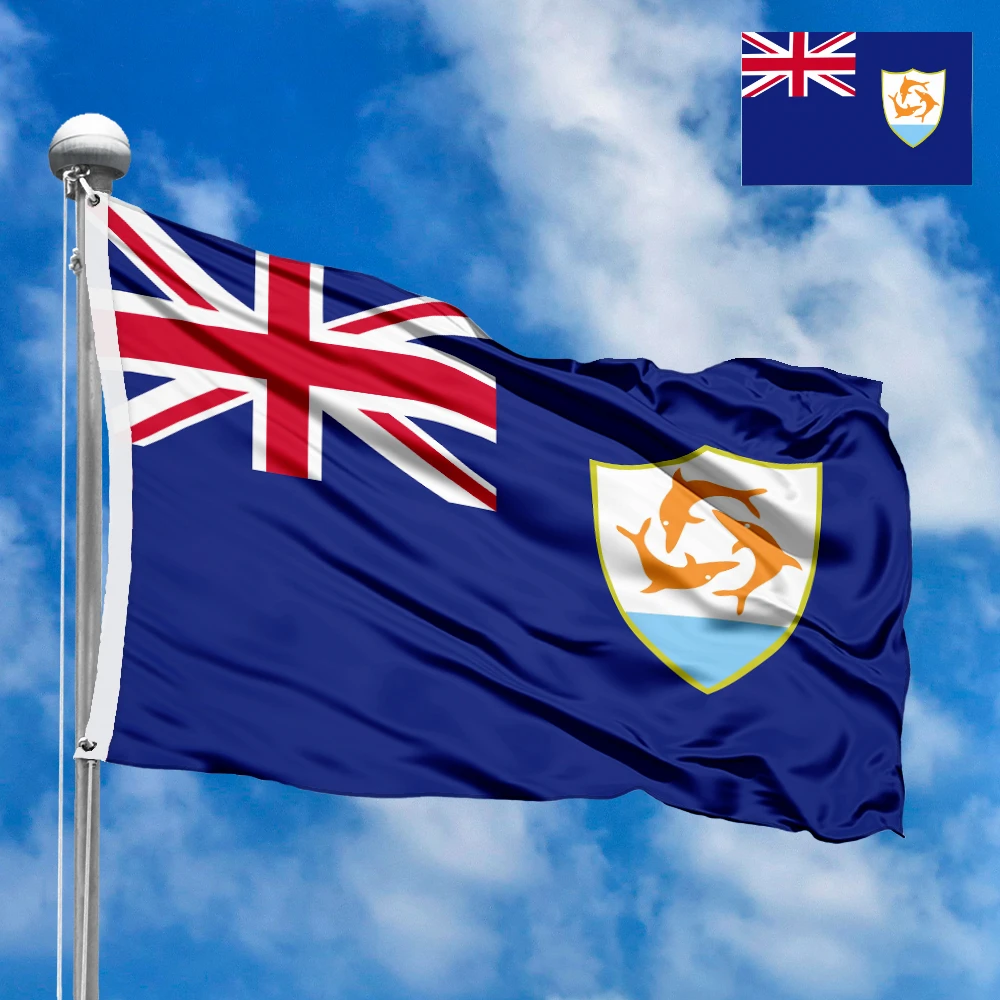
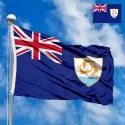
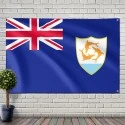
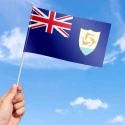
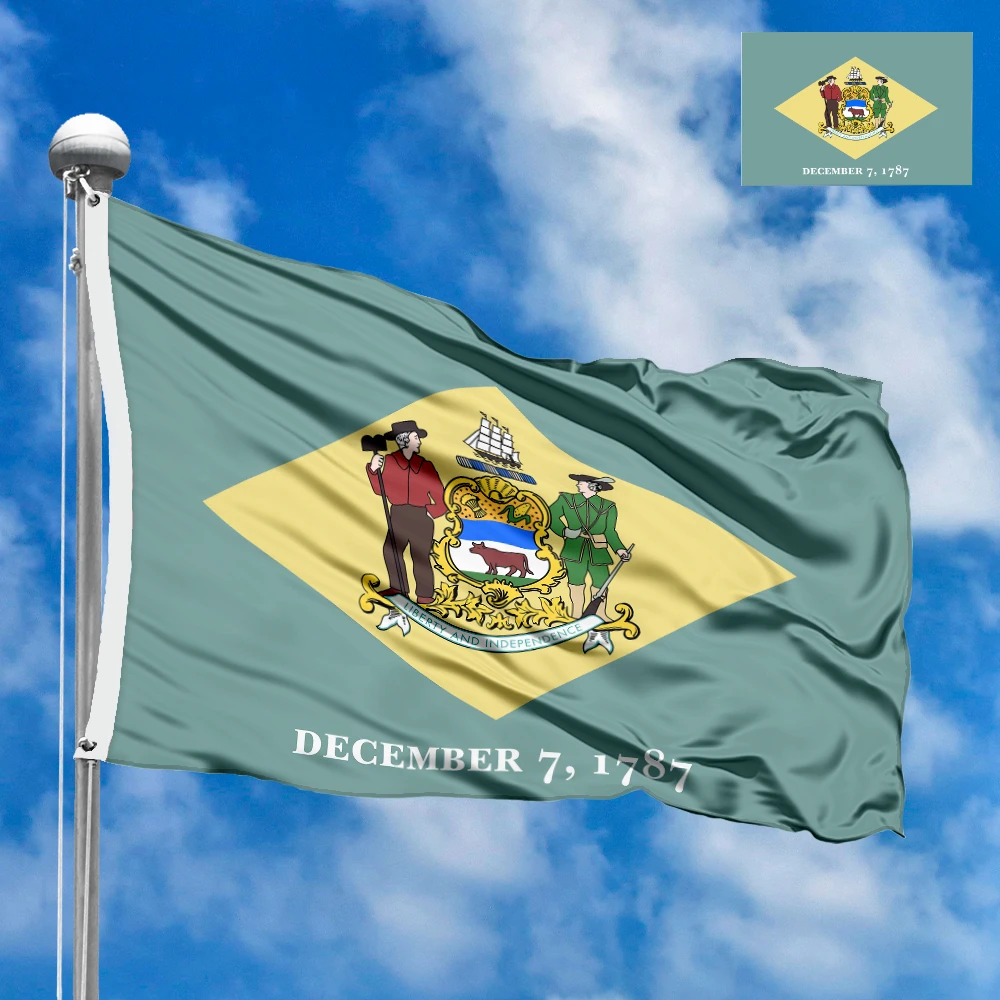




 Sizes:
Sizes:
 Sizes:
Sizes:
